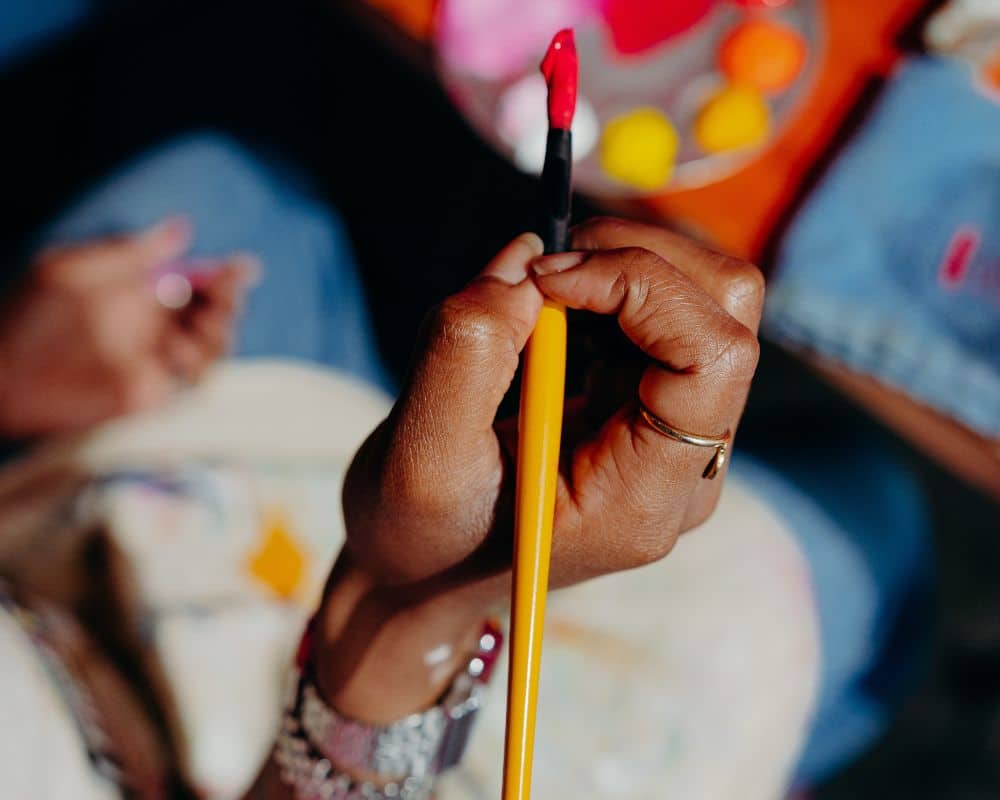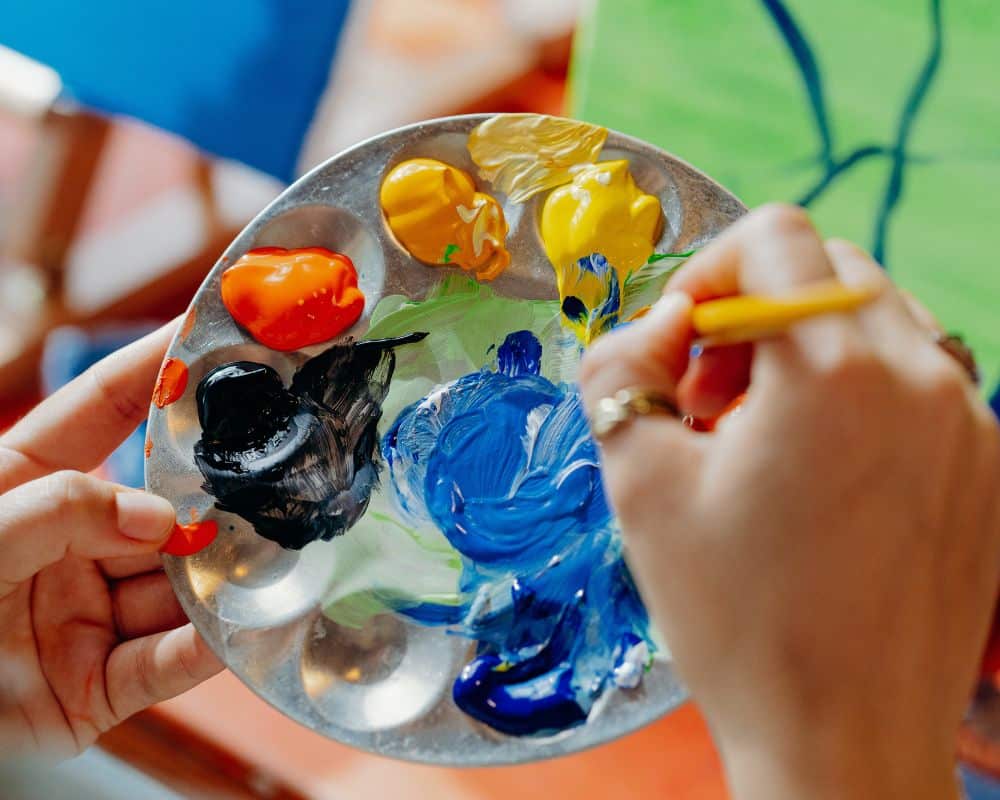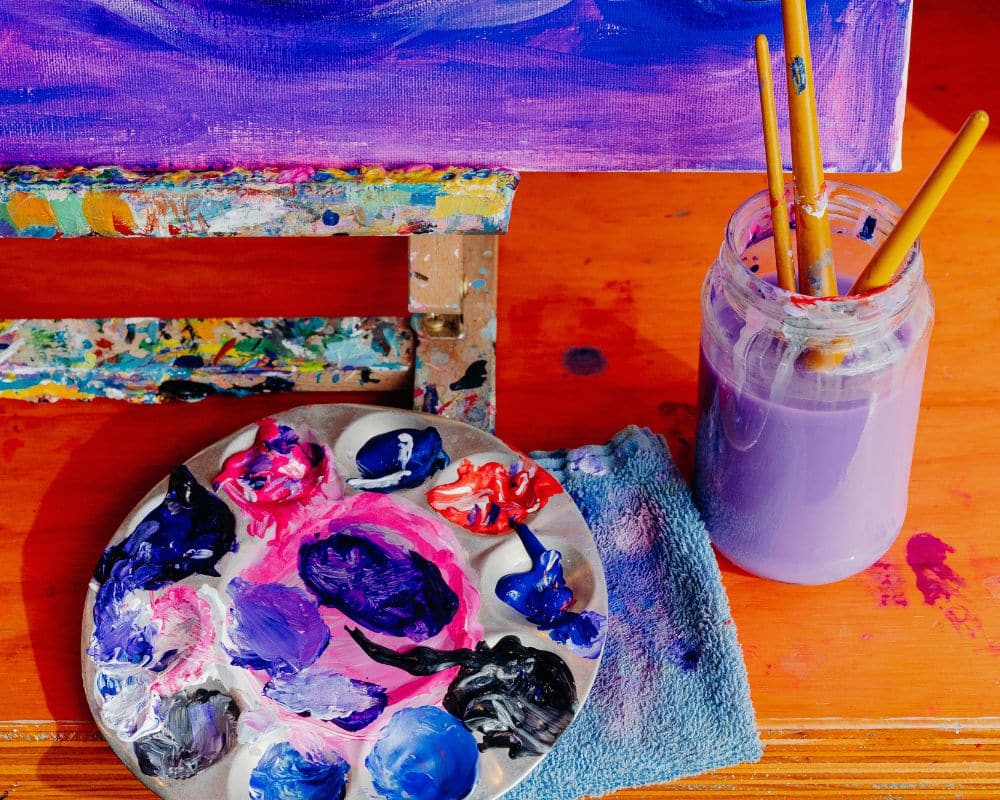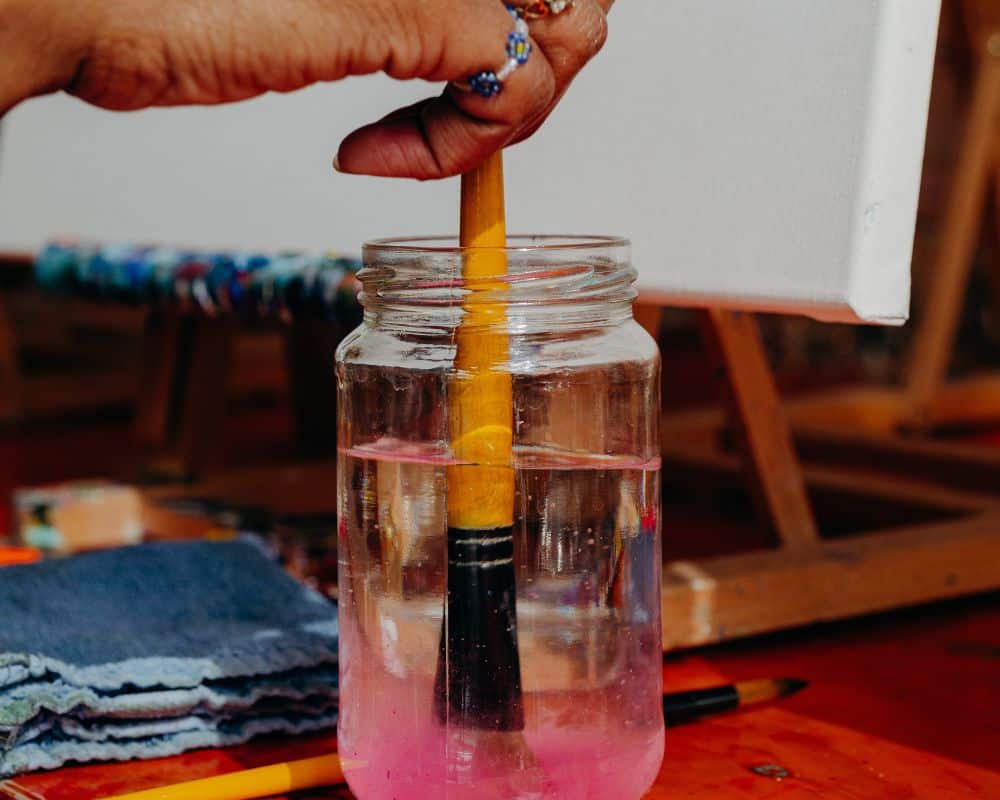Six Top Painting Tips for Your First Paint and Sip
Dec 09, 2022
Is this your first dip into paint and sip? Welcome! At the very least you’re in for a very fun time. But then, you never know what might come about from your first paint and sip session… magical things happen when your creativity is unleashed!
We know it can feel daunting to learn something totally new. We’ve been painting with guests in Brisbane, Sydney and Melbourne for almost a decade, and we know that for new painters, the idea of creative expression can feel way outside the comfort zone. The great thing is, you’re not alone. We have an experienced Cork & Chroma artist on hand to guide you through your chosen painting step by step, and you’ll be surrounded by a room full of painting friends who are all in the same boat. And… you get to bring wine.
To ease you into your first paint and sip, we’ve curated a list of our top six practical painting tips to note before your visit. They’re little things really, but knowing them can make a big difference to your painting experience.
1. Leave space on your palette
Trust us, your future self will thank you for this! We know how tempting it is to have the full spectrum of paint possibilities, but it’s best to leave a little space free on your palette. Having this bit of wriggle room allows us to mix and blend new colours during the session, so that if inspiration strikes and you want to introduce a new colour, you can easily do so. It also saves needless paint waste; people often take a lot more paint than they actually use.
The full spectrum of paints are available to you throughout the session, and you can visit the paint station as many times as you wish. At the start of the session your artist will let you know which colours are used to create the original painting (follow along with the original, or go rogue with your colours – either way, leave a few free wells on your palette!). Start with a modest amount of each colour, so the colours don’t mix together and become tainted.
2. Mix a little paint at a time
This tip follows on from the one above. It’s best to mix small amounts of paint at a time to leave room for different colours. There may be occasions where you need to mix a more generous amount, like when filling in large areas like the background, or when creating a particular shade (I.e., skin tone) that might be difficult to recreate. Your artist will guide you here, and if you’re not sure, just ask! Try and avoid swamping your palette with paint, as this is difficult to work with and can make a big ol’ mess.
3. Let your paint dry between steps
One of the perks of acrylic paint is that it dries super quickly, especially when a thin coat of paint is applied. This means if there’s anything you might like to add or edit on your painting, you can easily do so by painting over the top once it dries off. Brighter colours and highlights also stand out better when they are applied to a dry surface.
There are some techniques we use where we work with the paint while it’s wet, such as when blending colours together. However, when painting elements on top of each other (for example, painting a starfish on a rock) it’s best to allow the base coat to dry off before adding the next layer. Slathering on a thick layer of paint can feel like a shortcut, but chances are it will slow you down during the painting session as you’ll need to wait for it to dry before adding anything over the top. Trust us, 2-3 thin layers of paint will dry more quickly than one thick, globby one! If you like that thicker texture, add it right at the end.
4. Add water to your paint
Water is the underrated painter’s bestie. It keeps us nicely hydrated in between those wines, and can also be used as a medium to thin down your paint and achieve different textural effects. Acrylic paint on its own is quite rich and thick, but when we add water the consistency stretches and thins, allowing the paint to flow more readily on the canvas. If you’re ever having difficulty spreading your paint on the canvas, try adding a few drops of water to your paint and mixing it in. Same goes if you’re trying to paint a nice crisp edge on something; mixing water with your paint will help quell those fuzzy edges. Add a little water to your paint at a time to reach the desired consistency for the textural effect you are trying to achieve.
We use water to clean our brushes, too. Make sure you give the bristles a nice little stomp on the bottom of your jar to remove all the paint! Wipe any excess moisture on your artist rag, then you’re good to go.
5. Take a step back from your canvas
Who knew one little step could be so important? Taking a step or two away from your canvas and looking at it from a new vantage point can really help you get a fresh perspective on the overall piece. It’s so easy to be critical of our painting when we’re inches away from it, and viewing the painting from a distance can feel refreshing. It’s easier to assess as a whole; you’ll glean a better idea of how balanced the composition feels and if any areas need more attention or contrast. Plus, it’s fun to take a little joy lap around the room and check out what your fellow artists are creating! When you come back to your painting, you’ll return with fresh eyes and more clarity.
6. Enjoy the process
Paint and sip sessions are all about having fun and connecting creatively with the people around you. If you can release any expectations of your own ability and the finished product, chances are you’ll enjoy the process much more, which can only affect the outcome in a positive way. Allow your artist to guide you, and if you have any questions don’t be afraid to ask, because someone else might be wondering the same thing. You might hit a few little creative bumps along the way, but remember that’s totally normal—it’s all part of the creative process! Be compassionate towards yourself, and give yourself the props you deserve for branching out and trying something new.




